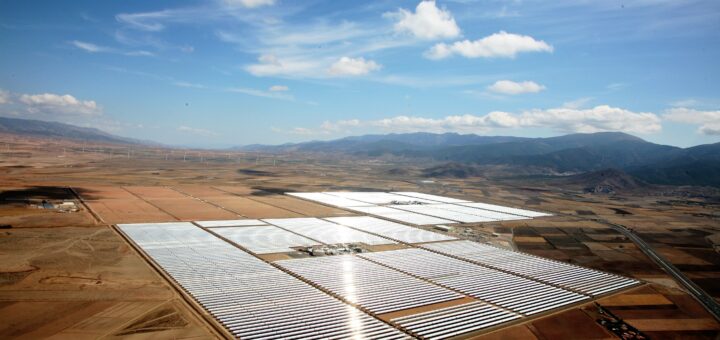There is no uniform format in the energy sector of the EU, although there are some initiatives for regional cooperation leading to intense cooperation between governments in specific parts of Europe. The main asset of regional cooperation lies in the ability of the involved actors to co-ordinate more efficiently. More work is required to address issues related to the further deployment of RES from 2020 to 2030 e.g., the most efficient use of RES potential.
Although a multitude of initiatives for regional cooperation in the energy sector already exists in the EU, there is no uniform format and the delineations vary depending on the mandate. Therefore, a more intense cooperation in fora with government involvement can be observed in specific parts of Europe. More precisely, Northwest Europe and Scandinavia have already progressed towards electricity market integration through regional bodies of cooperation. In Continental Europe, which is characterized by region overlaps, countries such as Germany, France and Poland are members of more than one initiative and group at the same time.
It is not uncommon that the drive observed at the implementation level is not adequate to the expressed ambitions to coordinate at the European level. This phenomenon is mainly attributed to national policy-making, which deprives many countries of crucial cross-border benefits. In this context, regional cooperation can be a catalyst for achieving the required coherence between national policies. Therefore, the European Commission should pursue a leading role in relation to regional cooperation in policy planning, exploiting the experience in cooperation opportunities and benefits.
Besides market failures, government failures and the role of policy interactions should also be investigated thoroughly in order to achieve an internal energy market and a more sustainable energy system in a mutually consistent way. In contrast to policy-making at EU or national level, the main asset of regional cooperation lies in the ability of the involved actors to co-ordinate more efficiently. Sharing information in smaller groups and fostering interactive procedures can help address the gap between the European and the national level as well as boost the effectiveness of policy-making. Moreover, regional fora can serve as platforms for discussing dissent between neighboring countries. However, regional solutions face the risk of fragmentation if the regions simultaneously develop incompatible solutions. In addition, it is often noticed that ambivalent or technically challenging issues, such as the harmonization of capacity mechanisms are not given the required attention. Finally, concerns have also been raised regarding the lack of transparency in cooperation fora.
Besides the significant work that has been already achieved, more is required to address issues related to the further deployment of RES from 2020 to 2030, such as the most efficient use of RES potential, electricity market design affecting RES deployment, as well as RES support costs and Member States cooperation on envisaged energy mixes. More specifically:
- Fostering cooperation requires the development of concrete regulatory solutions and related pilot projects.
- Underlying policy issues should also be taken into consideration; highest political commitment is of vital significance.
- Synchronization with European networks and Commission leadership can play a significant role in facilitating regional cooperation.
- Compatibility issues are a critical parameter for the interconnection of Europe with other regions.
- Region overlaps in continental Europe can enhance the emergence of compatible solutions across regions, but involved countries should share specific infrastructural characteristics.
- Regional Initiatives are deemed the main vehicle for coordinating the practical implementation of the new European cross-border regulatory framework.
With regards to the competitiveness of dispatchable RES technologies, for low storage hours (two hours or less) PVs coupled with storage seem to be the most cost-effective option, followed by offshore wind with storage and CSP in the third place. For storage requirements of more than four hours, CSP with storage seem to be the preferable option, considering that for four hours, the PVs are marginally better than CSP, while the difference between these two technologies and offshore wind increases significantly. The Capacity Factor is the parameter most significantly affecting the overall LCOE in the cases of offshore wind with storage and PV with storage. The same assumption is valid for CSP with storage projects, where the storage cost is already embedded in the initial investment cost and thus closely connected with the capacity factor.
Read more on this report here.

This article is an output of the EU-funded MUSTEC project.
MUSTEC
The MUSTEC consortium consists of nine renowned institutions from six European countries and includes many of the most prolific researchers in the European energy policy community, with very long track records of research in European and nationally funded energy policy research projects.
MUSTEC main results are the following:- identifying the barriers holding CSP back and limiting its expansion in Europe, in the context of the energy and climate targets of 2030 and beyond,
- finding the drivers for CSP and the potential niches in which intra-European CSP trade can play an important role for the decarbonisation, stabilisation and integration of the European power system, and
- proposing concrete policy solutions to overcome the identified obstacles and create the necessary enabling conditions for European CSP growth
- Project title: Market Uptake of Solar Thermal Electricity through Cooperation (MUSTEC)
- Funding scheme: European Union Horizon 2020 Programme (EU H2020, grant agreement no. 764626)
- Duration: 3 years (1 October 2017 – 30 September 2020)
- Project coordinator: Centro de Investigaciones Energéticas, Medioambientales y Tecnológicas – CIEMAT, Spain
- Project website: http://www.mustec.eu



